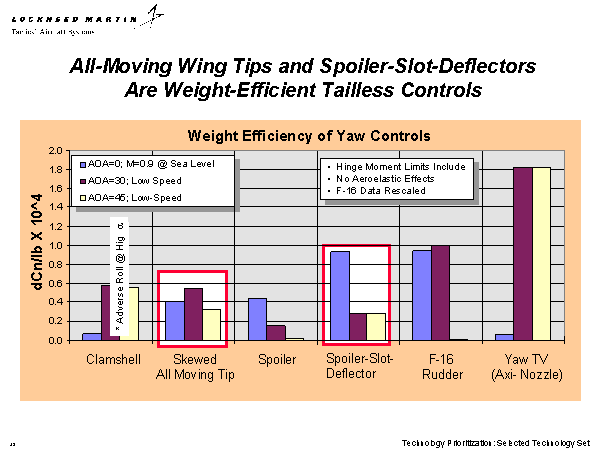Slide 28 of 58
Notes:
The chart shows weight efficiency for various directional controls. An efficiency parameter was computed by dividing the control power available (DCn) by the weight of the effector and its actuator. The clamshell, typically used by previous tailless aircraft, has good weight efficiency at low dynamic pressure conditions. However, the high hinge moments associated with this control contribute to very poor high-speed efficiency. Furthermore, at high AOA, flow separation causes adverse roll-yaw characteristics that limit the usefulness of this surface during roll coordination.
Both the all-moving wing tip and the spoiler-slot-deflector exhibit much smaller high-speed hinge moments, and are more efficient than the clamshell. A rudder has excellent weight efficiency throughout the majority of the AOA envelope, but suffers at high AOA as it loses effectiveness. Yaw thrust vectoring (TV) is shown for comparison purposes. At low speeds (low dynamic pressures), TV is the most efficient of any of the effectors. However, TVís control effectiveness falls off rapidly at high dynamic pressures, and its efficiency suffers.
The all-moving wing tip provides good weight efficiency in all flight conditions (although not the best at any given one) and therefore is a good choice for tailless aircraft control. The spoiler-slot-deflector ranks second in this regard. Note that weight efficiency is as good as that of the F-16 rudder in the high speed low-AOA condition.















